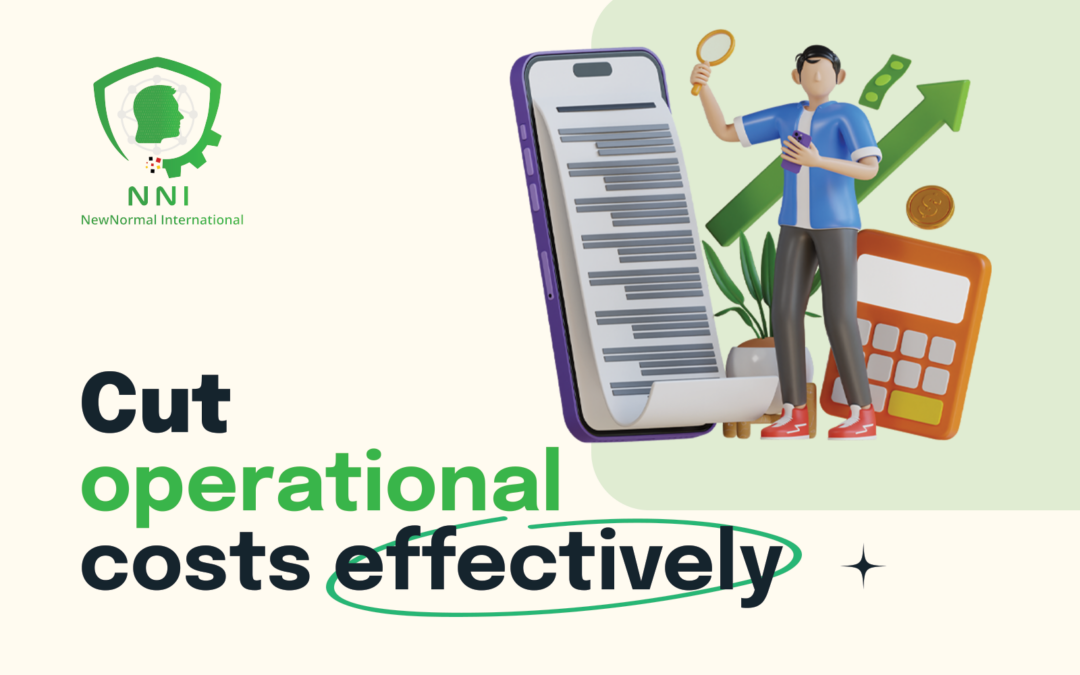Strategies for Cutting Operational Costs Effectively
In today’s dynamic and competitive business landscape, organizations are constantly seeking ways to optimize their operations and improve their bottom line. One key focus for businesses of all sizes is finding ways to cut operational costs without compromising on quality or efficiency. While businesses operate in a diverse and ever-evolving world, there are strategies that can be universally applied to reduce operational costs and improve profitability. In this article, we will explore some of these effective cost-cutting strategies without delving into topics that are unrelated to the core subject.
1. Streamlining Processes:
One of the most effective ways to reduce operational costs is by streamlining processes. Businesses should regularly assess their workflows and look for opportunities to eliminate redundancies and inefficiencies. This might involve automating certain tasks, revising job roles, or simplifying the supply chain. Such improvements can enhance productivity and reduce the need for unnecessary labor and resources.
2. Energy Efficiency:
Energy consumption can be a significant operational cost for many businesses. Implementing energy-efficient practices, such as using LED lighting, investing in energy-efficient appliances, and optimizing heating and cooling systems, can lead to substantial cost savings over time. Moreover, these measures align with environmental responsibility, which can enhance a company’s reputation.
3. Vendor Negotiations and Procurement Optimization:
Collaborating with suppliers to negotiate better terms and prices can lead to significant cost reductions. Regularly reviewing supplier contracts, consolidating purchases, and seeking out alternative vendors can help businesses secure more favorable deals. Additionally, effective procurement optimization can help control costs by ensuring that resources are used judiciously.
4. Resource Management:
Efficient resource management is crucial for cost reduction. Tracking and monitoring resource usage, such as office supplies, raw materials, and inventory, can help identify wastage and reduce costs. Implementing just-in-time inventory management and adopting lean principles can minimize excess inventory and storage expenses.
5. Employee Training and Development:
Investing in employee training and development can be a long-term cost-cutting strategy. Well-trained employees are more efficient and can adapt to changes in the business environment. Employee retention also becomes more likely when individuals feel valued and are given opportunities to grow within the company, reducing recruitment and onboarding costs.
6. Technology Integration:
Embracing the latest technology can improve operational efficiency and reduce costs. For example, using cloud-based software solutions can reduce the need for physical storage and IT maintenance costs. Automation tools can streamline repetitive tasks, freeing up employees to focus on more strategic work.
7. Outsourcing Non-Core Functions:
Consider outsourcing non-core functions, such as customer support, accounting, or IT services, to specialized providers. This can often be more cost-effective than maintaining in-house departments for these functions. Outsourcing allows businesses to tap into specialized expertise while reducing operational overhead.
8. Telecommuting and Remote Work:
The COVID-19 pandemic accelerated the adoption of remote work, which can significantly reduce costs associated with maintaining physical office spaces. By allowing employees to work from home or in a remote setting, businesses can cut down on expenses related to office space, utilities, and on-site facilities.
9. Waste Reduction and Recycling:
Reducing waste and implementing recycling programs can lower disposal costs and contribute to a company’s sustainability goals. By encouraging employees to be more mindful of waste generation and implementing recycling initiatives, businesses can reduce waste management expenses.
10. Regular Financial Analysis:
It’s crucial for businesses to regularly review their financial statements and performance metrics. Financial analysis helps identify areas where costs can be reduced and revenue increased. By closely monitoring finances, companies can make informed decisions to improve their financial health.
Reducing operational costs effectively is essential for maintaining a competitive edge in today’s business world. By implementing strategies like streamlining processes, improving energy efficiency, negotiating with vendors, and embracing technology, businesses can optimize their operations and boost profitability.
#CostCutting #OperationalEfficiency #BusinessOptimization #ResourceManagement #Outsourcing






















